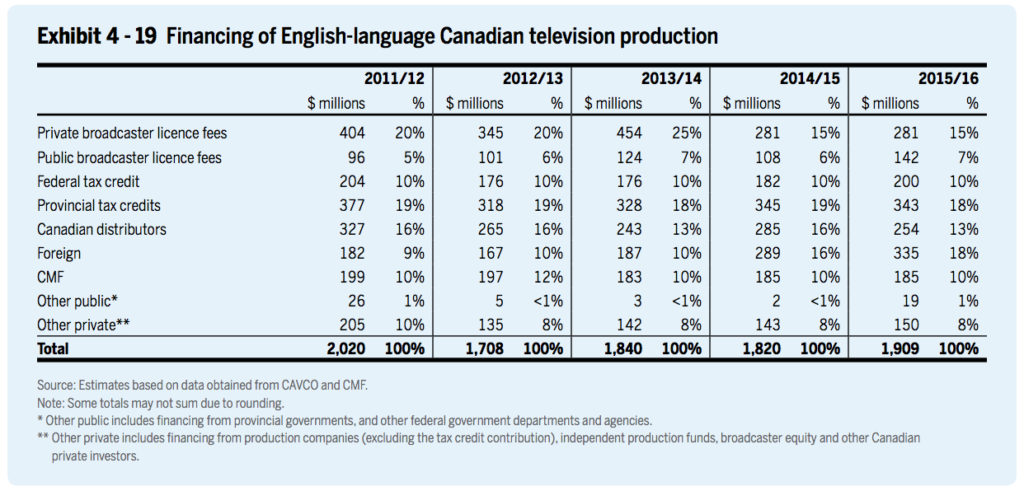The Canadian Media Producers Association recently released its annual report on the state of screen-based media production in Canada. Despite the doomsayers who fear that the emergence of Netflix will result in less money for production in Canada, the report confirms that financing of Canadian television production continues to grow, reaching its highest point in the last five years. With $2.6 billion spent on Canadian television production, the sector remains healthy with support from licensing fees, tax credits and funding from a variety of sources.
More notable, however, is the growth of English-language Canadian television production, which has been backed with a major increase of foreign funding over the past three years. Foreign financing of Canadian English-language television production hit $335 million, which now exceeds all other sources of funding, with the exception of the combination of all provincial tax credits (both represent 18% of total financing). In other words, foreign financing now contributes more toward English-language television production than the licensing fees paid by private or public broadcasters, federal tax credits, Canadian distributors, and the Canadian Media Fund.
As recently as 2013-14, foreign funding represented 10% of total financing ($187 million), far less than Canadian distributors and roughly the same as the Canadian Media Fund. No longer. In 2014-15, foreign financing jumped by $100 million (to 16% of total funding) and added another $46 million in 2015-16 (to climb to 18% of total funding). By comparison, financing from Canadian distributors and the Canada Media Fund have remained flat with both now easily exceeded by foreign support.

CMPA Profile 2016, Page 55, http://www.cmpa.ca/sites/default/files/documents/industry-information/profile/Profile%202016%20EN.pdf
When viewed by genre, the importance of foreign funding for fictional programming becomes even more apparent. Foreign financing is easily the top source of financing for fictional English-language television programming, now comprising 22% of all funding. By comparison, private broadcasters contribute only 7% of financing for fiction.
The CMPA does not break down the source of foreign funding (its sources for the numbers come from CAVCO and the CMF), but it is worth noting that Netflix began investing in original television production in 2013 and significantly ramped up its investment in 2015. The timing of Netflix investment coincides with the sharp Canadian growth in foreign spending. In fact, Netflix says that Canada ranks as one of the top three locations worldwide for its commissioned original productions. Last year, I blogged that given that the company spends billions each year on content, the spending in Canada is likely larger than all but a handful of regulated sources (the Netflix submission provides a full sense of the scope of its support for Canadian content).
The precise amount of Netflix spending in the Canadian market remains unknown, but the CMPA’s own data calls into question demands for regulations for over-the-top video providers. The data suggests that Canada has created a world-class production environment that is capable of attracting significant investment without new regulation. With foreign financing growing faster than any other source of funding and comprising nearly one of every five dollars spent on English-language television production, the notion of cramming old policies into a new, successful marketplace would represent a step backward for Minister Joly’s vision of a confident, export-driven, future-focused Canadian cultural policy.








Pingback: Budget 2017: Why Canada's Digital Policy Future Is Up For Grabs - Michael Geist
Pingback: The Reel Story: Why Changing How We Measure a "Canadian Film" is Long Overdue - Michael Geist